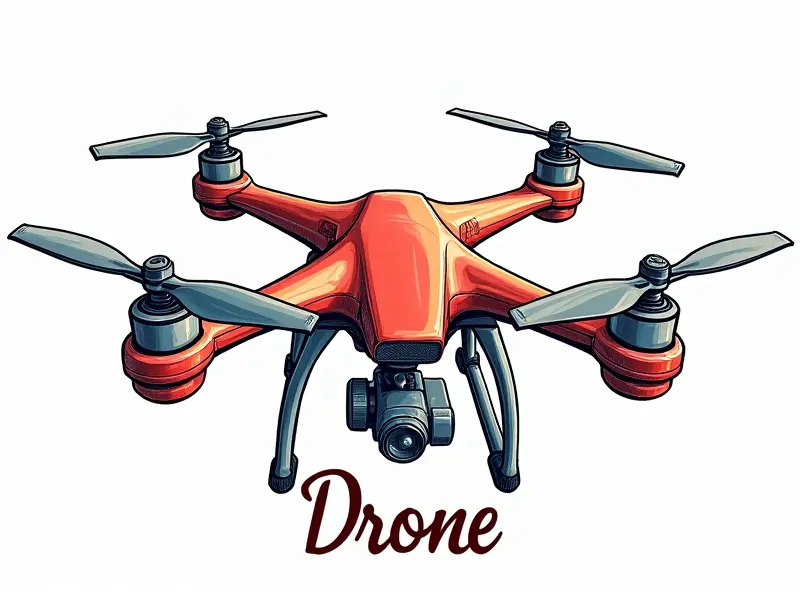GPS accuracy for drones?

The use of GPS in drone technology has revolutionized aerial photography, surveying, and delivery services. However, the accuracy of GPS drones is a critical factor that affects their performance in various applications. This article delves into how accurate GPS drones are today, explores common issues with GPS accuracy, and provides best practices to maximize precision.
How Accurate Are GPS Drones Today?
The accuracy of modern GPS drones varies depending on several factors such as the quality of the GPS module, environmental conditions, and interference. Typically, consumer-grade drones offer horizontal positioning accuracy within a few meters, while professional-grade drones can achieve centimeter-level precision.
Understanding GPS Error in Drones
GPS error is a combination of various factors that contribute to inaccuracies in drone navigation. These include satellite geometry, atmospheric conditions, and multipath effects where signals bounce off surfaces before reaching the receiver. Understanding these errors helps in mitigating their impact on drone performance.
Best Practices for Drone GPS Calibration
To enhance GPS accuracy, regular calibration of drones is essential. This involves updating firmware, setting up ground control points, and performing initial alignment checks. Proper calibration ensures that the drone’s GPS system functions optimally under varying conditions.
Factors Affecting Drone GPS Performance
- Satellite Availability: The number of satellites available for positioning affects accuracy; more satellites provide better precision.
- Terrain and Obstacles: Tall buildings, trees, and mountains can obstruct satellite signals, reducing GPS reliability.
- Magnetic Interference: Electromagnetic fields from electronic devices or power lines can disrupt GPS signals.
Common Issues with Drone GPS Accuracy
Several common issues affect the accuracy of drone GPS systems. These include signal loss, drift due to magnetic anomalies, and inaccuracies caused by rapid changes in altitude or speed. Addressing these issues requires a comprehensive approach involving both hardware upgrades and software optimizations.
Top Tips to Boost Drone GPS Precision
- Use RTK/PPK Technology: Real-time Kinematic (RTK) and Post-Processed Kinematic (PPK) technologies offer centimeter-level accuracy by correcting for atmospheric delays and other errors.
- Incorporate Augmentation Systems: Utilize augmentation systems like WAAS or EGNOS to improve signal quality and reduce error margins.
Maximizing GPS Range and Stability in Drones
To maximize the range and stability of drone GPS, consider using high-quality antennas with wide frequency bands. Additionally, implementing redundancy through multiple receivers can enhance reliability by providing backup signals during signal loss or degradation.
The Impact of Weather on Drone GPS
Weather conditions such as heavy rain, fog, and strong winds can significantly affect GPS performance. Raindrops can cause multipath errors, while dense cloud cover may block satellite signals temporarily. Understanding these impacts helps in planning drone operations under adverse weather.
Choosing the Right GPS Module for Drones
Selecting a suitable GPS module is crucial for achieving optimal drone accuracy. Factors to consider include receiver sensitivity, frequency range, and support for advanced features like RTK or SBAS (Satellite-Based Augmentation System).
Understanding Drone GPS Signal Interference
Interference from various sources such as radio waves, mobile networks, and Wi-Fi can degrade GPS performance. Minimizing exposure to these interferences through proper antenna placement and shielding techniques is essential for maintaining accuracy.
Comparing Drone GPS Technologies Available Now
Diverse technologies are available in the market today, each offering unique advantages. For instance, L1/L5 dual-frequency receivers provide better resistance against ionospheric delays compared to single-frequency units. Evaluating these options based on specific needs can lead to more informed purchasing decisions.
Conclusion
In conclusion, achieving high GPS accuracy in drones requires a combination of advanced hardware, robust calibration practices, and an understanding of environmental factors that influence performance. By adopting best practices and leveraging cutting-edge technologies, drone operators can ensure reliable navigation and positioning for their applications.

